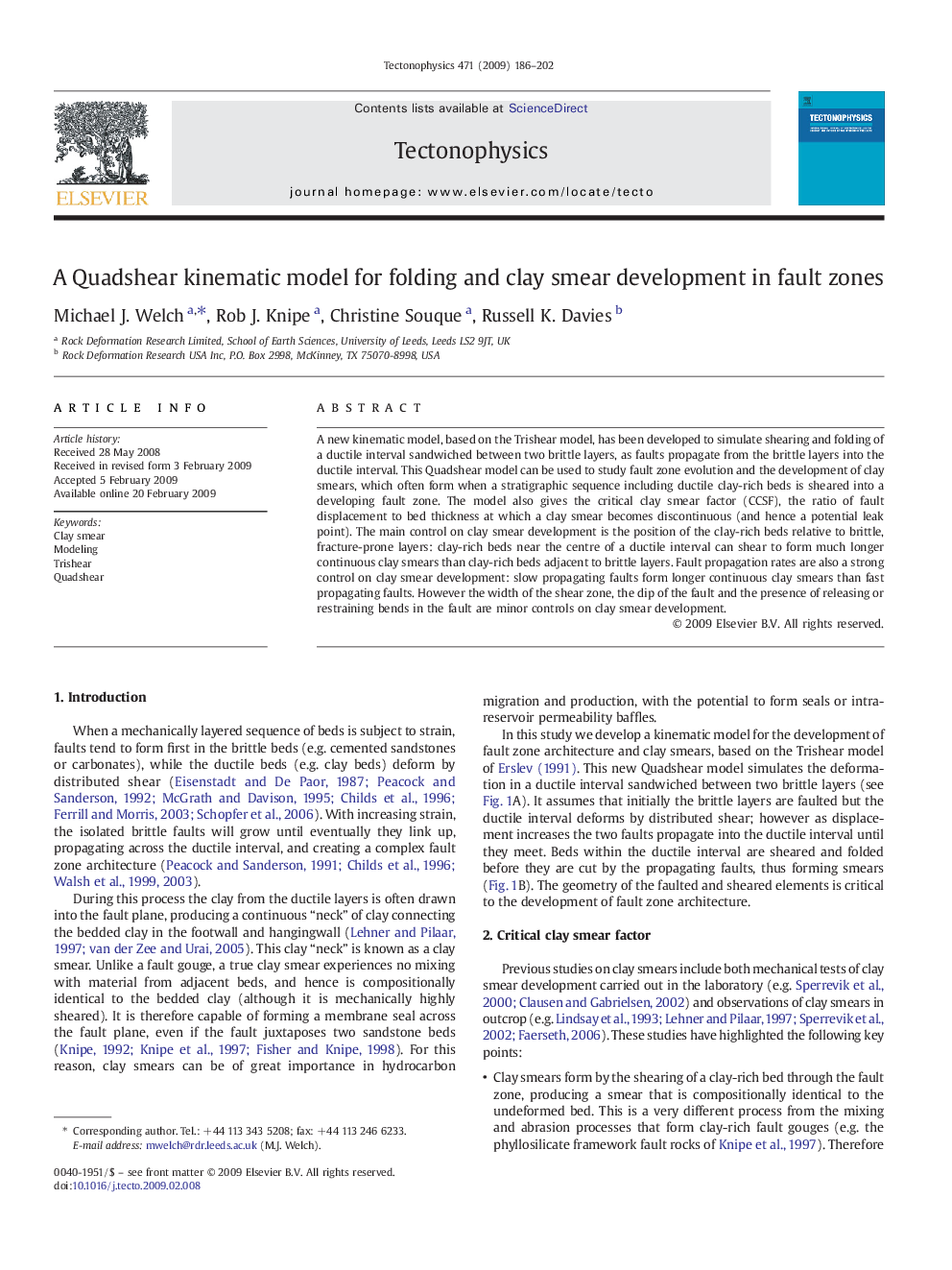| Article ID | Journal | Published Year | Pages | File Type |
|---|---|---|---|---|
| 4693803 | Tectonophysics | 2009 | 17 Pages |
A new kinematic model, based on the Trishear model, has been developed to simulate shearing and folding of a ductile interval sandwiched between two brittle layers, as faults propagate from the brittle layers into the ductile interval. This Quadshear model can be used to study fault zone evolution and the development of clay smears, which often form when a stratigraphic sequence including ductile clay-rich beds is sheared into a developing fault zone. The model also gives the critical clay smear factor (CCSF), the ratio of fault displacement to bed thickness at which a clay smear becomes discontinuous (and hence a potential leak point). The main control on clay smear development is the position of the clay-rich beds relative to brittle, fracture-prone layers: clay-rich beds near the centre of a ductile interval can shear to form much longer continuous clay smears than clay-rich beds adjacent to brittle layers. Fault propagation rates are also a strong control on clay smear development: slow propagating faults form longer continuous clay smears than fast propagating faults. However the width of the shear zone, the dip of the fault and the presence of releasing or restraining bends in the fault are minor controls on clay smear development.
